The Role of Stansted Airport in Green Building

Stansted Airport's Green Initiatives
Stansted Airport, one of the UK's busiest airports, is making significant strides in green building and sustainability. The airport has implemented several green initiatives, demonstrating its commitment to reducing its environmental impact. One of the key initiatives is the use of renewable energy sources. The airport has installed solar panels on its buildings, reducing its reliance on non-renewable energy. Additionally, Stansted has implemented a comprehensive waste management system, aiming to recycle or compost all waste generated at the airport. The airport also encourages the use of public transport by providing efficient bus and train services to and from the airport. Furthermore, Stansted is investing in energy-efficient technologies and infrastructure, such as LED lighting and electric vehicles for ground operations. These initiatives not only contribute to environmental sustainability but also set a precedent for other airports worldwide. Stansted Airport's green initiatives are a testament to its role in promoting green building and sustainability in the aviation industry.
Energy Conservation at Stansted Airport
Stansted Airport is playing a significant role in promoting green building and energy conservation. The airport has implemented several energy-saving measures, including the use of energy-efficient lighting and heating systems, and the installation of solar panels to generate renewable energy. The airport's terminal building has been designed to maximise natural light, reducing the need for artificial lighting. Furthermore, Stansted has invested in electric vehicles for ground operations to reduce carbon emissions. The airport also encourages passengers and staff to use public transport, further contributing to energy conservation. These initiatives demonstrate Stansted Airport's commitment to sustainable practices and its role in promoting green building. The airport's efforts not only reduce its environmental impact but also set a positive example for other airports and businesses to follow. Stansted Airport's energy conservation measures are a testament to its dedication to sustainability and green building.
Water Management at Stansted Airport
Stansted Airport, one of the UK's busiest airports, is making significant strides in green building through its innovative water management strategies. The airport has implemented a comprehensive water management system that includes rainwater harvesting, greywater recycling, and advanced wastewater treatment. This system not only reduces the airport's water consumption but also minimizes its impact on the local water resources. Rainwater is collected from the vast roof areas and used for non-potable purposes such as toilet flushing and landscape irrigation. Greywater from sinks and showers is treated and reused, further reducing the demand for fresh water. The wastewater treatment facility ensures that all water leaving the airport is clean and safe. These initiatives demonstrate Stansted Airport's commitment to sustainable practices and its role as a leader in green building. The airport's water management strategies serve as a model for other airports and large facilities worldwide.
Waste Management at Stansted Airport
Stansted Airport, one of the busiest airports in the UK, is taking significant strides in green building by implementing robust waste management strategies. The airport is committed to reducing its environmental footprint by recycling and reusing waste generated on-site. It has introduced a comprehensive waste management system that segregates waste at the source, ensuring maximum recycling and minimum landfill disposal. The airport also promotes the use of reusable materials and has installed recycling bins throughout the premises. Furthermore, Stansted Airport has partnered with local waste management companies to convert non-recyclable waste into energy. This initiative not only reduces waste but also contributes to the airport's energy supply, furthering its sustainability goals. Stansted Airport's waste management practices serve as a model for other airports and large facilities, demonstrating that effective waste management can significantly contribute to green building and sustainability.
Air Quality Improvement at Stansted Airport
Stansted Airport has made significant strides in improving air quality, playing a pivotal role in the green building movement. The airport has implemented a series of measures to reduce its carbon footprint, including the use of electric vehicles and the installation of energy-efficient lighting systems. The airport's commitment to sustainability is also evident in its construction projects, which prioritize the use of sustainable materials and energy-efficient designs. Furthermore, Stansted has introduced a comprehensive air quality monitoring system to track progress and identify areas for improvement. These initiatives have resulted in a significant reduction in CO2 emissions, contributing to cleaner air and a healthier environment for both airport users and the surrounding community. Stansted's efforts demonstrate the potential for airports to lead the way in sustainable development, setting a positive example for the aviation industry worldwide.
Green Building Design at Stansted Airport
Stansted Airport is leading the way in green building design, demonstrating its commitment to sustainability and environmental responsibility. The airport's design incorporates several eco-friendly features, including energy-efficient lighting, water-saving fixtures, and a state-of-the-art heating and cooling system that reduces energy consumption. The use of sustainable materials in construction also contributes to the airport's green credentials. Moreover, Stansted Airport has implemented a waste management system that promotes recycling and reduces landfill waste. The airport's green building design not only minimizes its environmental impact but also creates a healthier and more comfortable environment for passengers and staff. Stansted Airport's commitment to green building design is a testament to its role as a responsible corporate citizen. It sets a benchmark for other airports and businesses, demonstrating that sustainability and operational efficiency can go hand in hand. This commitment to green building design is a significant part of Stansted Airport's broader sustainability strategy, which aims to reduce its carbon footprint and contribute to a more sustainable future.
Biodiversity Conservation at Stansted Airport
Stansted Airport has taken a significant stride in green building by prioritizing biodiversity conservation. The airport has implemented a comprehensive Biodiversity Action Plan, focusing on the protection and enhancement of local wildlife and habitats. The plan includes the management of grasslands, woodlands, and wetlands within the airport's vicinity, providing a safe haven for various species. The airport also collaborates with local conservation groups to monitor and protect endangered species. Furthermore, Stansted Airport has incorporated green building principles in its infrastructure development, using sustainable materials and energy-efficient systems. The airport's commitment to biodiversity conservation not only contributes to environmental sustainability but also sets a commendable example for other airports worldwide. This initiative underscores the airport's role in promoting green building and biodiversity conservation, demonstrating that industrial development and environmental preservation can indeed coexist harmoniously.
Stansted Airport's Green Transport
Stansted Airport, one of the busiest airports in the UK, is making significant strides in promoting green transport. As part of its commitment to sustainable development, the airport has implemented several initiatives to reduce its carbon footprint and promote eco-friendly travel. These include the provision of electric vehicle charging points, encouraging the use of public transport, and promoting cycling and walking for staff and passengers. The airport also operates a fleet of electric buses for passenger transfers, significantly reducing emissions. Furthermore, Stansted Airport is investing in renewable energy sources to power its operations, contributing to the global effort to combat climate change. These initiatives demonstrate Stansted Airport's role in green building, setting a benchmark for other airports worldwide. The airport's commitment to green transport not only reduces its environmental impact but also enhances the passenger experience by promoting sustainable travel options.
Stansted Airport's Green Policies
Stansted Airport, one of the UK's busiest airports, is making significant strides in its commitment to environmental sustainability. The airport's green policies are a testament to its dedication to reducing its carbon footprint and promoting green building. Stansted has implemented a series of measures, including the use of renewable energy sources, waste management systems, and water conservation strategies. The airport has also invested in energy-efficient infrastructure, such as LED lighting and electric vehicles for ground operations. Furthermore, Stansted is committed to biodiversity, with plans to create new habitats and green spaces around the airport. These initiatives not only contribute to the fight against climate change but also enhance the airport's operational efficiency. Stansted Airport's green policies serve as a model for other airports worldwide, demonstrating that environmental sustainability and successful business operations can go hand in hand.
Impact of Stansted Airport's Green Initiatives
Stansted Airport's green initiatives have significantly contributed to the role of green building in the aviation industry. The airport has implemented several eco-friendly measures, including the use of renewable energy sources, waste management systems, and water conservation strategies. These initiatives have not only reduced the airport's carbon footprint but also set a benchmark for other airports worldwide. The airport's commitment to sustainability is evident in its infrastructure. The use of energy-efficient materials and technologies in the construction and maintenance of the airport buildings has significantly reduced energy consumption. The airport also promotes the use of electric vehicles and has installed charging stations to encourage their use. Moreover, Stansted's waste management system ensures that waste is recycled or disposed of in an environmentally friendly manner. The airport also has a water conservation strategy in place, which includes rainwater harvesting and the use of water-efficient appliances. Stansted Airport's green initiatives have had a profound impact on the aviation industry, demonstrating that airports can play a significant role in promoting sustainability and green building.
Our Latest Blog Posts

Stansted AirportA Guide to the Arrival Process
Stansted Airport, a bustling hub for international travel, offers a streamlined arrival process. Upon landing, passengers are guided to immigration checks, baggage reclaim, and customs. Clear signag ...

The Impact of Airline Deregulation on Stansted Airport
Airline deregulation has significantly impacted Stansted Airport, leading to increased competition, lower fares, and a surge in passenger traffic. However, it also brought challenges like overcrowd ...

The Impact of Airline Innovation on Stansted Airport
Innovations in the airline industry have significantly boosted Stansted Airport's operations. Enhanced technology, improved customer service, and efficient processes have increased passenger traffi ...

The Architecture of Stansted AirportA Modern Marvel
Stansted Airport's architecture is a modern marvel, showcasing a futuristic design. Its floating roof, glass walls, and innovative use of space reflect a blend of functionality and aesthetics, makin ...

Stansted Airport: A Guide to the Reservation Process
Navigating Stansted Airport's reservation process is simple. From booking flights to reserving parking spots, their user-friendly online system ensures a hassle-free experience. Remember to check-i ...

Stansted Airport: A Guide to the Mediation Process
Stansted Airport offers a comprehensive mediation process to resolve disputes. This involves neutral third parties facilitating communication between conflicting parties, aiming to reach a mutually ...

The Impact of Airline Competition on Stansted Airport
Increased airline competition at Stansted Airport has led to improved services and lower fares for passengers. However, it has also resulted in heightened congestion and environmental concerns, nec ...
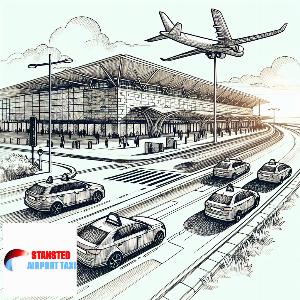
Stansted Airport: A Guide to the Business Excellence Process
Stansted Airport exemplifies business excellence through its efficient operations, customer-centric services, and innovative growth strategies. Its process includes rigorous planning, continuous im ...
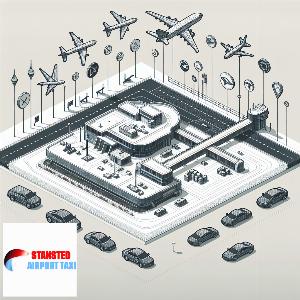
The Impact of Airline Privatization on Stansted Airport
Airline privatization has significantly impacted Stansted Airport, leading to increased competition, improved services, and enhanced operational efficiency. However, it also raised concerns about h ...

The Role of Stansted Airport in Cargo Transport
Stansted Airport plays a crucial role in cargo transport, serving as a global hub for freight services. It facilitates international trade, handling over 250,000 tonnes of cargo annually, including ...

The Impact of Airline Standardization on Stansted Airport
Standardization in airlines has significantly impacted Stansted Airport, enhancing operational efficiency, safety, and customer satisfaction. It has streamlined processes, reduced errors, and facil ...

The Impact of Airline Virtualization on Stansted Airport
Airline virtualization has significantly impacted Stansted Airport, enhancing operational efficiency and passenger experience. It has streamlined processes, reduced costs, and improved data managem ...

The Role of Stansted Airport in Water Conservation
Stansted Airport plays a significant role in water conservation, implementing advanced water management systems. It recycles rainwater for non-potable uses, reducing water waste and contributing to ...

Stansted Airport: A Guide to the Resignation Process
Navigating the resignation process at Stansted Airport can be complex. It involves formal notification, transition planning, and potentially exit interviews. Understanding these steps can ensure a ...

Stansted Airport: A Guide to the Audit Process
Stansted Airport's audit process ensures operational efficiency and safety. It involves rigorous checks on security, baggage handling, and customer service. This guide provides an insight into the ...

Stansted Airport: A Guide to the Change Management Process
Stansted Airport's change management process is a strategic approach ensuring seamless transitions. It involves planning, implementing, and monitoring changes in infrastructure, services, or person ...
Blogs Pages
The Impact of Airline Globalization on Stansted Airport

Blog about The Impact of Airline Globalization on Stansted Airport...
The Role of Stansted Airport in Green Initiatives

Blog about The Role of Stansted Airport in Green Initiatives...
The Role of Stansted Airport in Sustainable Development

Blog about The Role of Stansted Airport in Sustainable Development...
Stansted Airport: A Guide to the Testing Process

Blog about Stansted Airport: A Guide to the Testing Process...
Stansted Airport: A Guide to the Validation Process
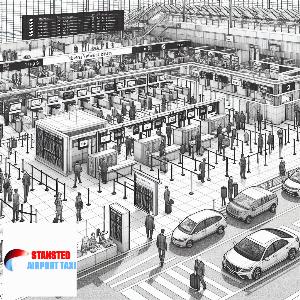
Blog about Stansted Airport: A Guide to the Validation Process...
Stansted Airport: A Guide to the Confirmation Process

Blog about Stansted Airport: A Guide to the Confirmation Process...
The Role of Stansted Airport in Biodiversity Protection
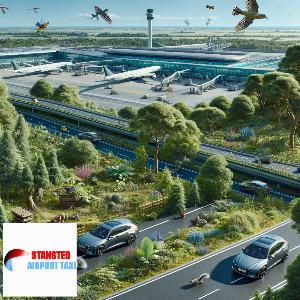
Blog about The Role of Stansted Airport in Biodiversity Protection...
Stansted Airport: A Guide to the Performance Improvement Process

Blog about Stansted Airport: A Guide to the Performance Improvement Process...
The Impact of Airline Flexibility on Stansted Airport
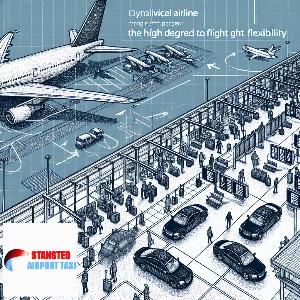
Blog about The Impact of Airline Flexibility on Stansted Airport...




